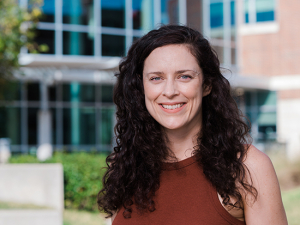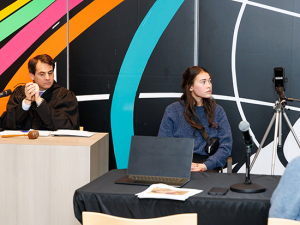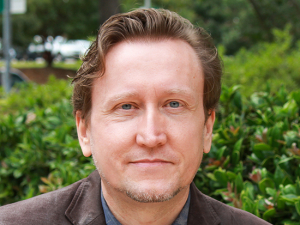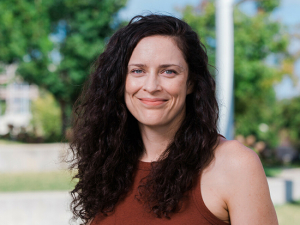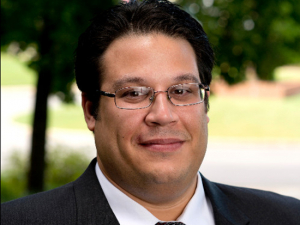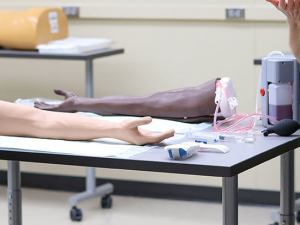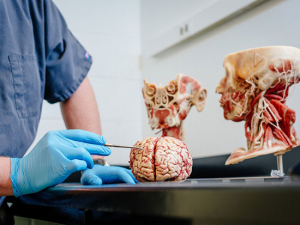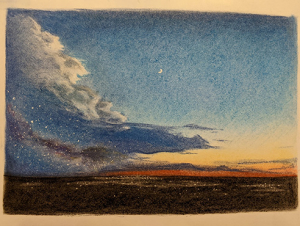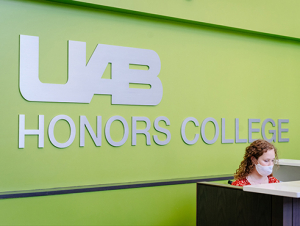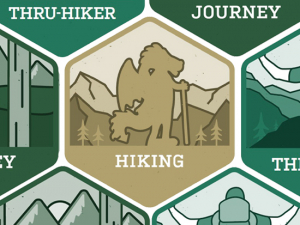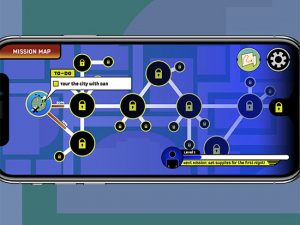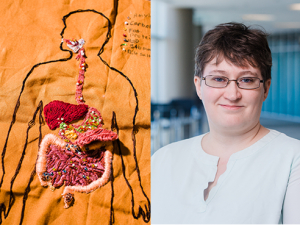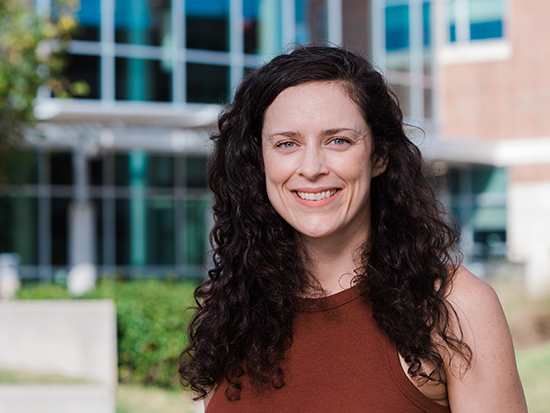 Meagan Malone, Ph.D., assistant professor in the Department of English, has created a website and blog called Composing in the Age of GenAI. In addition to resources, including classroom activities, assignments and rubrics from her first-year composition and professional writing courses, the site aims to connect practitioners.Few of the millions of students who enter college each year will graduate without completing a writing course. But composition is about more than teaching students to write, says Meagan Malone, Ph.D., an assistant professor in the Department of English.
Meagan Malone, Ph.D., assistant professor in the Department of English, has created a website and blog called Composing in the Age of GenAI. In addition to resources, including classroom activities, assignments and rubrics from her first-year composition and professional writing courses, the site aims to connect practitioners.Few of the millions of students who enter college each year will graduate without completing a writing course. But composition is about more than teaching students to write, says Meagan Malone, Ph.D., an assistant professor in the Department of English.
“Much of my first-year writing courses are about helping students to think through their reading process,” Malone said. “There is all this research in the field that backs that up, that reading helps the writing process because they are two sides of the same coin. One of the main purposes of a writing class is to go through the process of thinking.”
But how should you teach composition, or careful reading, when the shortcut of instant writing and slick-sounding summaries are suddenly available to anyone through generative AI tools such as ChatGPT? That is a topic that Malone has not been able to stop thinking about for the past 18 months.
Last year about this time, the emergence of genAI had the field of writing instruction in crisis, Malone says. Now, most universities, including UAB, have empowered individual instructors (in all departments) to determine how they want to handle genAI. (ChatGPT remains the most well-known tool; but others include Claude, Google Gemini and Microsoft Copilot. Copilot is UAB’s approved genAI writing tool. Keep up with all things AI at UAB at uab.edu/ai.)
Composing in the Age of GenAI
At UAB, faculty can choose to allow students to use genAI, with restrictions (such as an explicit acknowledgment from students when they have used it). Or faculty can prohibit their students from using genAI altogether. “We are all trying out what we have, but we are also now all on our own” in this experimentation, Malone said. She recently launched one way of sharing the search for a solution: a website and blog called Composing in the Age of GenAI. The site shares her own classroom activities, assignments and rubrics from her first-year composition and professional writing courses. Malone also is using the site to share her experiences in the classroom and to solicit feedback from other faculty, at UAB and beyond.
Join the conversation
How is genAI affecting the world of composing? Malone invites instructors, faculty, students, teaching assistants and administrators to submit blog posts of 350-500 words for consideration for her site, Composing in the Age of GenAI (use the form on this page). Topics may include pedagogical solutions, responses to published posts, speculation about future implications or some other issue related to genAI. For more information, email Malone at memalone@uab.edu.
Many faculty who are deeply invested in teaching composition, like Malone, have come to similar conclusions about what must happen next. “I really do think it is inevitable that we are going to meaningfully incorporate AI” across the curriculum, she said. “What we’re trying to do is integrate these tools in people’s writing process, while at the same time preserving their critical thinking. My interest is in where we define the importance of writing in a college student’s life. What should someone go through in their freshman year to do the tasks that they will have to do for composing in life?”
Malone has had success in her first-year writing courses in “building assignments that are so engaging that students want to do it themselves,” she said. (Multiple examples are shared on the site.) “That’s a lot harder to do in 200-level literature courses,” she acknowledged. “I would love for this site to provide a meeting point” to grapple with an answer.
Quick experiments yield answers
In addition to resources, such as activities she has used in her courses, Malone has posted about her approach to dealing with unattributed AI use in assignments. She will not use an AI checker, she says (for reasons explained in another blog post), but she will take off points for the kinds of poor writing that AI produces. She has also posted on her students’ anonymous survey responses to this policy. One of the main takeaways: Students wanted to see examples. The hallmarks are “lax specificity, rigidly formulaic, perfect mechanics; but, weirdly, it doesn’t have any voice to it,” Malone said. But spotting these issues is not simple for many students, Malone said: “They are dazzled by the technology. To them, it just sounds like writing.” So she added a hands-on activity. She generated a response to one of her writing prompts using ChatGPT and walked through it with her students, pointing out the deficiencies in the AI’s answer.
“The only way to get good solutions or at least good thoughts is to do these kinds of quick experiments,” Malone said. “Scholarship is catching up; but for now, the kinds of answers I’m looking for, as an instructor, need to come faster. Let’s pilot something in the class and use that formative information to figure out.”
Students who use AI without attribution present one challenge. But so do students who refuse to engage with AI in their college careers, Malone argues. “So many of my students say, ‘I’m just not using it,’” she said. That was the response of Haley Wells, a recent graduate of UAB’s accelerated master’s program in history who also earned a bachelor’s degree in English and now is a program manager at the Alabama Holocaust Education Center. In a blog post, Malone interviewed Wells about her resistance to the genAI-related assignments while she was in Malone’s Introduction to Professional Writing class in the fall 2023 semester — and how Wells uses genAI now that she is in the workforce. “At the time, she really hated it,” Malone said. “Now she said, ‘Thank you. I use that at my workplace.’”
“These conundrums plague me”
Malone was inspired by an experience while she was working toward her master’s degree in philosophy, where the blog of one professor “was a hot spot for playing out your ideas while you were writing a paper,” she said. The discussion in the comments helped spark more than one research topic, Malone explains.
“I cannot create that out of thin air, but my intent is to create an audience of folks like myself who are asking these questions,” Malone said. “What is a clear grading schema? Many students need help to make sense out of complex texts. What is the problem with having ChatGPT summarize the article? Are we doing them a disservice by forcing them to pick through it, or are we short-changing them if we don’t give them the habits of mind you build by doing that work? These conundrums plague me, and I want more people giving input. I want people to say, ‘I’m trying this out, and here’s what I’m noticing’ — that kind of thing.”

